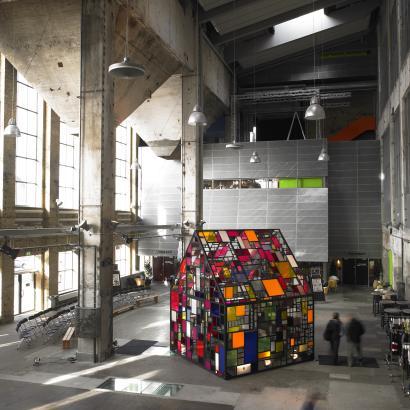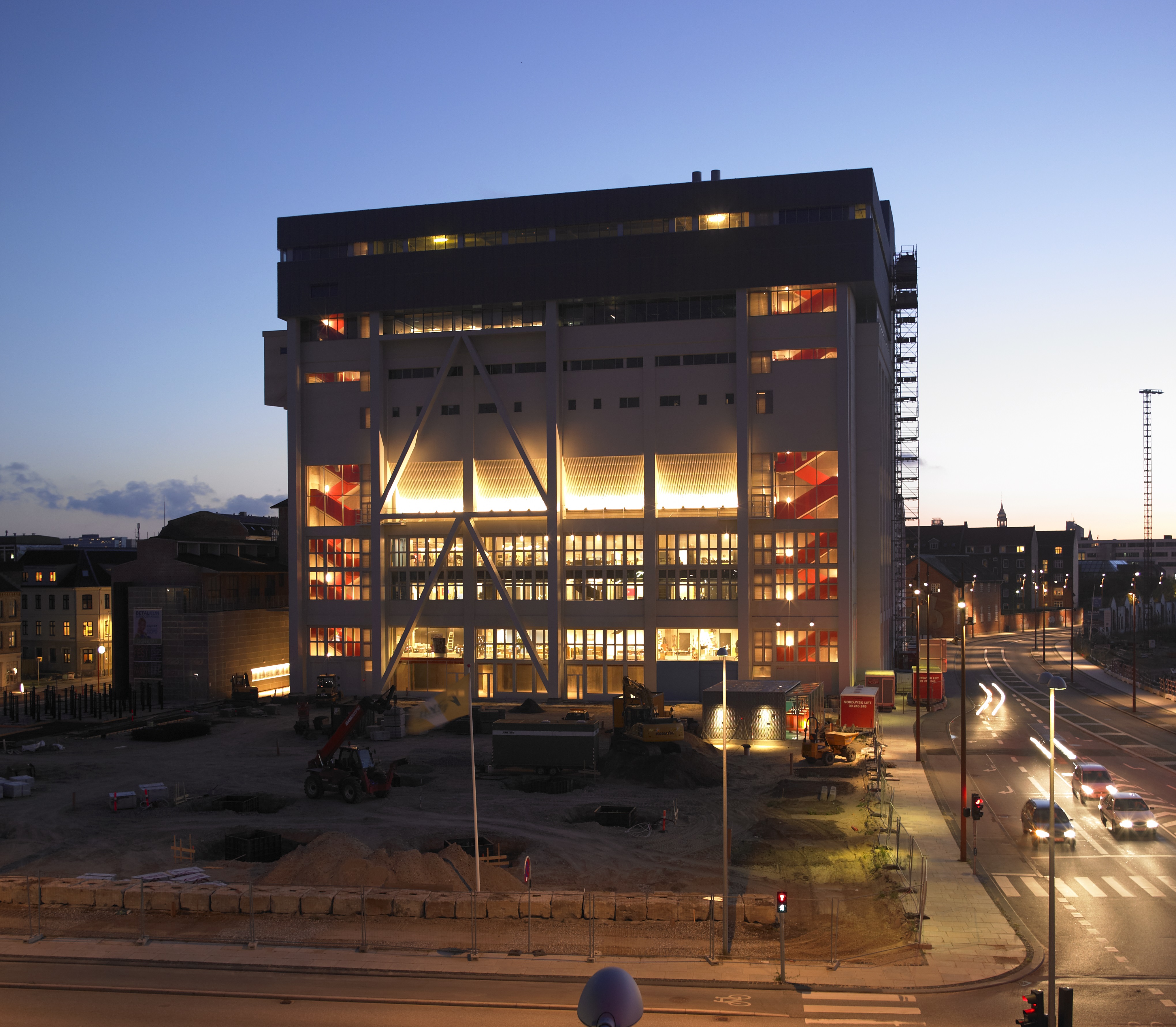Nordkraft
During the period 2007-2009, Aalborg’s old power station, Nordkraft, from 1947 was converted into a cultural centre. Preserving the history of the former power station, the original concrete structure was exposed, and along with the old doors, plateaus and coal funnels this carries on the very special identity of the building. The architects behind the transformation include CUBO Architects and NORD architects.
Nordkraft has become the gathering point of sports, culture and trade in Aalborg with more than 1 million visitors a year. Large parts of the power station have been maintained and all original materials are produced locally. The conversion of the power station testifies to Aalborg’s industrial cultural history and development into a city of culture.
Economics & Branding
The potentials of the old power station have been used to pursue Aalborg’s vision to maintain the qualities that testifies to the transition of the city from industrial city to city of culture. Today, Nordkraft stands as a landmark of the city’s industrial history which has revitalised the spatial opportunities of the industrial city. This gives the cultural centre very special value which every year attracts more than one million visitors.
Resource Use & Preservation Value
The conversion of Nordkraft includes several stories of sustainability seen from a recycling perspective. The large volumes of buildings have been preserved along with old elements, and together they tell the story of the former functionality of the building, such as the large coal funnels in Kedelhallen. When buildings are reused for new purposes, you basically save the environmental impact it would have to produce new materials for structures and components. The shell – i.e. the supporting structures, walls and floors – may account for 50 %-75 % of the environmental impact from the materials of buildings. Reuse of buildings provides a strong identity and considerable environmental gains compared to new building.
Significant energy savings were achieved in the conversion through external insulation of the facades, installation of low-energy windows and keeping the of the inner rooms away from the old facades. As an industrial and historical landmark with several variations of cultural offerings, Nordkraft has once again become a source of supply – now for the local cultural life.

About the case
Nordkraft testifies to Aalborg’s development from industrial city to city of culture and is a successful attraction for residents of the city and visiting tourists. A total of 25 organisations and associations have leases in the building. In addition to business premises and flats, the building is also the home of cultural offerings, such as theatre, concert room, sports facilities and a cinema. Together with the newly established outdoor spaces and the identity-enhancing story of the history of the city, the numerous offers have given Nordkraft status as a ‘powerhouse of culture and leisure’ with more than one million visitors a year.
The cultural institution is situated close to the waterfront of Aalborg, the concert hall ‘Musikkens Hus’ and Aalborg University. The old power station is a distinct building in the cityscape and visually links the industrial architecture and silos of the area with the low market town buildings in city centre of Aalborg. Landscape architect Preben Skaarup and COWI have been in charge of the design of the square, Teglgaards Plads, east of the building complex which forms part of the green area known as ‘Karolinelundskilen’. The square has playground equipment and a sand pit, as well as sports and cultural facilities that can be used in connection with cultural and sports functions in Nordkraft.
